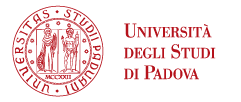PRIN 2022 / Picano

Acronimo: ADMIRE
Titolo: ADvanced Modeling of hIgh-speed aerodynamics for MaRs Entry
Responsabile scientifico: Prof. Francesco PICANO - Dipartimento di Ingegneria Industriale-Università' degli Studi di PADOVA
Coordinatore: Prof. Matteo BERNARDINI- Università degli Studi di ROMA "La Sapienza"
Partner-Unità di ricerca: Dipartimento di Ingegneria Industriale-Università degli Studi di PADOVA, Università degli di Roma "Tor Vergata", Università degli studi di Modena e Reggio Emilia
Bando: PRIN 2022 - Decreto Direttoriale n. 20435 del 06-11-2024
Durata: 04/02/2025 - 03/02/2027 (24 mesi)
Budget totale progetto: € 60.958,00
Abstract del progetto
The ambition for space exploration during the last decade has propelled a renewed interest in Mars missions, awakening the scientific curiosity about high-speed, supersonic and hypersonic flows. However, the majority of the past experiences aiming at setting foot on the Red Planet failed because of the inadequacy of the aerothermodynamic modeling adopted during the design of the entry phase. Given the complexity of the breaking technology, the high velocities and temperatures reached by the vehicle, the distinct composition of the Martian atmosphere, and the diverse regimes that the flow encounters, controlled experiments of reasonably practical cases of interest are extremely costly and require special facilities. As a result, the need for better numerical tools to predict the onset of supersonic flow instabilities is indisputable, and its relevance is demonstrated by being one of the main challenging research objectives by major space agencies. This project aspires to improve the state of the art in the field, by developing a robust framework to accurately simulate and comprehend the complex aerothermodynamic phenomena involved in planetary atmospheric entry. The proposal is formulated by a collaboration between four qualified units, with a long-standing and demonstrated experience in the simulation and modeling of fluid dynamics, and is organized into five, structured, ambitious - but realistic - work packages. The backbone of the project is based on three macro-activities that aim at characterizing thoroughly the entry of a space vehicle. First, we expect to create a database of large-scale simulations of hypersonic flows in the continuum regime, for both Mars and Earth atmospheres, by means of an enhanced high-fidelity solver able to take into account thermochemical effects activated by high temperatures. On the basis of the obtained results, we intend to develop advanced models for Large-Eddy Simulation of high-speed turbulent flows in complex geometries. Moreover, we plan to carry out a fundamental study using high-fidelity particle-based methods to characterize the early stages of the entry, in which the atmosphere is highly rarefied, and to assess the validity of different methodologies in near-continuum regimes. Finally, we plan a suitable dissemination of the results to extend the general knowledge of the field and to share our methodological and physical findings with the international community and particularly with national and European industries. Finally, we believe that in the ambitious roadmap for Europe's future in space exploration, in which Italian research and strategic industries play a pivotal role, our project and its expected outcomes would represent a precious expertise and, in general, an important step towards a superior modeling of problems involving high-speed flows.





